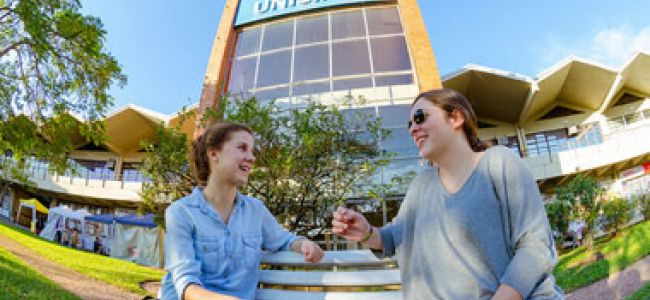
The ancient deity whose two faces look out in opposite directions, Janus, has long been a symbol for change and innovation. Janus represents beginnings and transitions, a glance back at the past with an eye toward the future, and the balance between identity and innovation. In a well-known article about innovation in the Harvard Business Review, Reilly and Tushman (2004) evoke Janus in a discussion of the imperative that managers observe a balance between exploration and exploitation and tackle new opportunities without abandoning existing capabilities.
Janus came to mind as I thought about the challenges facing Jesuit business schools. Is Janus sufficient to represent the variety of opportunities and constraints with which schools must cope? Does the balance between dualities--past and future, and identity and innovation--explain the hectic wave in which my students, colleagues, and I are caught up? Based upon my experiences as a professor, chair, and dean at a Jesuit business school in Brazil, I highlight here four topics that affect future planning and ongoing work: internationalization, entrepreneurship, social and environmental commitment, and ethics. I discuss each topic, pointing out its significance in terms of opportunities presented and constraints imposed.
Internationalization
Internationalization is no longer a choice but a necessity, even for business schools in Brazil. Business schools--and universities as well--have a new role to play as we face the challenges of leveraging local economies by fostering their talents to generate a knowledge- and creativity-based economy. The development of knowledge clusters to align with global value service and innovation chains requires educating people to belong to a talent pool. In Brazil, decision makers have been quite varied in their consciousness of and focus on the opportunities offered by the new economy; practices that promote intercultural education and impact research in a global setting have not yet been fully developed.
Brazil has come late to going global in both business and education. During the last several decades of the 20th century, Brazilian policy for science and technology bet on endogenous growth, so universities and research institutes fell behind with respect to international networking. Brazilian companies began to internationalize at the end of the 20th century. Focused on promoting international experiences for natural science, technology, and engineering students, the first high-impact Brazilian public policy for higher education was established in 2010. This program--Science without Borders--became a landmark for our country.
At our business school, internationalization has become both a strategy and a set of goals to be accomplished over the short term. We have sought international recognition and connection through the attainment of accreditation standards, improved student and faculty exchange opportunities, creation of an internal policy recommending international liaisons for all research projects, the establishment of dual degree programs, and increasing participation in international networks. While these initiatives have shown promising outcomes, we are just taking our first steps to opening new avenues to international connections. New stages will be forthcoming, and the biggest challenge will be to maintain a disciplined focus as we encounter the inevitable successes and failures.
Entrepreneurship
Business schools have been recognized as privileged actors within universities in promoting entrepreneurship. Aligned with technological and scientific areas, the expertise in responding to market and societal needs, intrinsic to our core disciplines, has placed the business school at the forefront in entrepreneurship promotion. Ideally, entrepreneurship should be a challenge for the entire university, especially in the context of an emerging economy wherein catch-up strategies are needed to overcome poverty and to contribute to the improvement of the economy, society, and institutions. Paradoxically, most Brazilian universities seem to continue to follow a model inspired by a European tradition: the Humboldt model of the university, which arose in early 19th-century Germany. According to this model, the university mission should be to provide instruction and to conduct research. However, it disregards a commitment to education that is useful, practical, and oriented toward professional training and fails to recognize that universities can be actively engaged in economic growth and other social concerns (Goldstein, 2010).
Universities in Brazil were established relatively recently. In the 17th century, the Portuguese kingdom denied the Jesuits permission to establish a university in its colony. Jesuit college alumni were forced to go to Europe, specifically to Coimbra, to continue higher education. It was not until the 19th century, upon the arrival in Brazil of the royal family and the Portuguese aristocracy in their escape from the Napoleonic invasion, that higher education institutions were first established (Fávero, 2006). As noted above, colleges and universities followed European tradition with the mission of providing instruction and conducting research.
Very recently, some community universities in Brazil have begun to establish practices in accordance with a “triple helix model” that interweaves academia, industry, and government within a spiral pattern of linkages to advance economic development through the strategy of technological innovation. It means breaking down traditional organizational, cultural, and normative barriers that in the past have separated these isolated spheres to the detriment of economic competitiveness and technological progress. For the university setting, it “envisions an academic structure and function that is revised through the realignment of economic development with research and teaching as academic missions” (Etzkowitz et al. 2000, p. 314).
With governance inspired by the “triple helix model,” the connection between the University (UNISINOS) and the Tech-Park (TECNOSINOS) creates an entrepreneurial spirit within the university and the business school. Strategically, there is a clear understanding that this connection can leverage and transform existing curricula and learning practices.
However, the implementation of new practices and full faculty adoption of an entrepreneurial attitude has not gone smoothly. There are constraints related not only to entrenched traditional mindsets, but also to external assessments that value and reward academic publication over practical and technical contributions.
